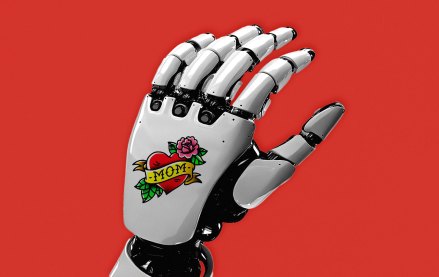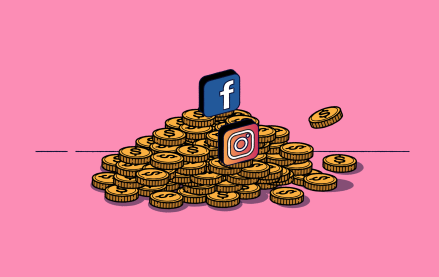Connect with execs from The New York Times, TIME, Dotdash Meredith and many more
The end of J. Walter Thompson didn’t come as a surprise. The 150-year-plus stalwart, which merged with WPP’s fast-growing Wunderman to become Wunderman Thompson was in some ways not for this time, when agency margins are razor thin and most of the growth in advertising is coming from media, not creative.
It also wasn’t a surprise considering that the departure of Martin Sorrell has in some ways marked the end of the traditional holding company era, one that WPP’s new boss Mark Read has been vocal about. Merging VML with another legacy agency, Y&R, was just step one. It speaks volumes that iconic creative names like Y&R and J. Walter Thompson were subsumed by a digital agency and direct marketing shop, respectively.
In some ways, the consolidation drumbeat that’s closing out the year has only just begun. The marketing landscape is completely upside down. Facebook and Google continue to suck up ad spend. Amazon has emerged as a legitimate third player there. And these companies — despite talks of alliances between agencies — are increasingly going direct to advertisers.
The consultancy threat is very much present, even as plenty will seek to downplay it. Mike Sheldon, the chairman and CEO of Deutsch North America, for example, said on a recent episode of Digiday’s Making Marketing that while the consulting giants, like Accenture, Deloitte and PwC, certainly are making their presence felt, he simply hasn’t encountered them in pitches the agency has participated in.
But the increasing calls for “business solutions,” not “advertising” meant that most agencies are simply left out in the cold. For all their talk, agencies haven’t really invested ahead of revenue on strategic hiring and practices that would enable them to do more consulting and advising, not just production and execution.
And when we talk about brands doing more in-house, that tends to be mostly executional production work. Which means that agencies without either significantly scaled media agency offerings or a big strategic consulting business are in trouble.
“M&A is the big theme for next year,” said Greg Paull, principal at R3, who consults brands on growth strategies. “Holding companies are going to consolidate, but consultants are going to be very acquisitive.” — Shareen Pathak
It’s not that easy
In sunny Monte Carlo this week, brand marketers gathered at Digiday’s Brand Summit Europe to discuss the brutal realities of taking media buying in-house. Those who are more advanced in the journey were quick to advise others on the brink of it to think long and hard before taking the plunge. Their message: If you think this is going to be easy or fast, think again. Brands including BT, Swarovski and Uber, all spoke candidly about their in-housing journeys. Uber’s head of media marketing for Europe, Middle East and Africa, Mattia Santin, claimed it has successfully taken its operations in-house. But he conceded that if another brand asked him today whether they should opt for in-housing, his answer would be less unequivocal than it would have been three years ago. Those considering it should think about whether they have the technical infrastructure, resources and the right people in place before committing to it, he advised. “I wouldn’t say don’t try it, but I’d suggest they think carefully about it and the organization’s objectives.” Another core theme: In-housing hasn’t been the threat to agencies that was once perceived. In fact, several brand marketers including HSBC and BT at the summit discussed how they’ve worked with their agency partners to bring operations in-house, with the agency content to either retain ownership of campaign execution, provide consultancy services, while the brand owns the ad tech contracts. — Jess Davies
Wayfair vs. Amazon
Wayfair took some time following Black Friday weekend to gloat. The online-only furniture store, which owns its namesake dot com as well as four other home goods sites, released an announcement on Wednesday that not only did its direct retail sales increase 58 percent during the holiday shopping weekend over last year, but its biggest sales jump took place on Black Friday. CEO Niraj Shah said in the release that the company expected top performance to take place on Cyber Monday, the day in the holiday shopping weekend dedicated to e-commerce. Online, Shah suggested, is the clear winner. What does that mean for a specialty online retailer in the Amazon age? As Wayfair customers bought Christmas trees, sofas and mattresses at discounted prices from Thursday to Monday, Wayfair pointed to its “MyWay” members-only promotions and perks and Wayfair Basics, its private-label line (that literally lifts the same nomenclature from Amazon’s biggest private label), as prominent sales drivers. Sounds familiar. Even if an e-commerce store can’t beat Amazon at its own game, Wayfair’s results imply there’s still room to win. — Hilary Milnes
More in Marketing

Generative AI sparks brand safety concerns marketers know all too well
Despite concerns around brand misuse and IP, most marketers are sticking to traditional strategies.

‘Production is a big topic right now’: With AI moving beyond media, Publicis turns toward creative
The holdco is positioning AI as core infrastructure for ad production not just media buys.

Instagram offers a new guide to advertisers to convince them to try out its creator marketplace
The 26-page document aims to make the whole process quick and painless.





